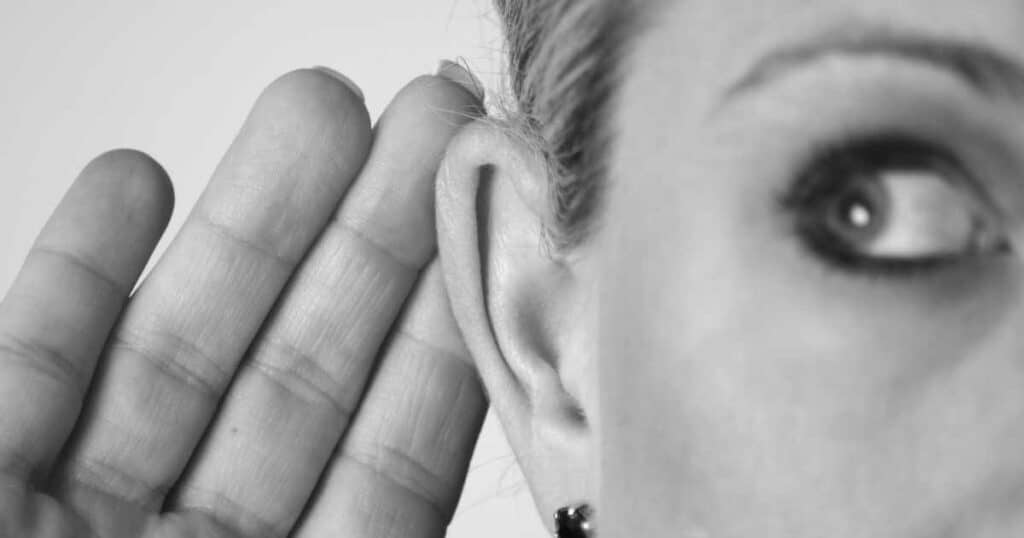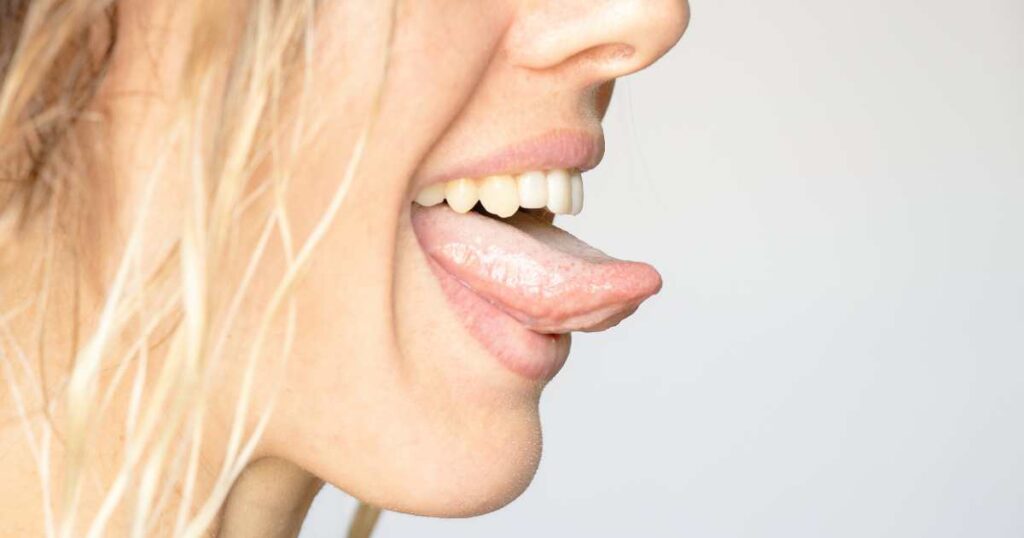Tinnitus Doctor Reviews The Lenire Device
I spent a lot of time putting this Lenire review together for you and I’m sure you’ll find it useful. Here’s a quick preview of the critical information about Lenire tinnitus treatment you’ll find here:
- What is the Lenire device?
- What is bimodal stimulation for tinnitus?
- Is the Lenire device a form of sound therapy?
- How does the Lenire device work?
- What does the Lenire device sound like?
- What does the Lenire device feel like?
- How much does the Lenire device cost?
- Does the Lenire device work for tinnitus?
- Lenire Reviews: The Good, the Bad, and the Ugly
Deep Dive on the Lenire Device by a Tinnitus Specialist

As a neurotologist and tinnitus specialist, many of my tinnitus patients are curious about the Lenire device as a tinnitus treatment. For those with chronic and debilitating tinnitus, any breakthrough that can reduce patients tinnitus severity is important to investigate.
So what is Neuromod’s tinnitus treatment device? It’s called Lenire, a bimodal neuromodulation device. This means it combines tinnitus masking sounds to the auditory system while sending mild electrical stimulation to the tongue. This dual stimulation is meant to relieve tinnitus symptoms on the theory that sensory input from two sources will stimulate neuroplasticity (brain wiring changes) better that just masking the tinnitus sound alone.
However, despite the “buzz” around Neuromod devices, it does not quite deserve the “ringing endorsement” that people are giving it. When we look closely, it’s unclear if this “bimodal neuromodulation device” is actually doing anything more than standard sound therapy devices.
Here, I offer a critical review of the Lenire device. I include authentic Lenire reviews from some of the first tinnitus patients to try it, putting their comments into perspective. I also do a deep dive on Lenire clinical trials, showing that they’re fundamentally flawed. Finally, I describe why a bimodal neuromodulation device can never be a stand-alone method to treat tinnitus.
What is the Lenire device?
Neuromod is a medical technology company that created a proprietary intraoral device that goes with a tinnitus masking system. The FDA granted de novo approval for this, meaning that its the first of its kind to be approved.
The Lenire system incorporates electrical stimulation to the tongue (trigeminal nerve) combined with sound waves from headphones (auditory system). The medical term for this is “bimodal stimulation”. There are three components to the device:
- “The Lenire Tonguetip: The Lenire Tonguetip is an electrical intraoral stimulation device designed to provide gentle electrical stimulation to the tongue, thereby stimulating the trigeminal nerve.
- The Lenire Controller: The Lenire Controller is a portable handheld device you can use to adjust settings. The Lenire controller works on both the audio system stimulus (tinnitus sound files) and the electrical intraoral stimulation device.
- Wireless Headphones: Lenire includes wireless headphones that pair to both the Lenire controller and the proprietary intraoral device. The system synchronizes the gentle electrical stimulation to the trigeminal nerve (via tongue stimulation) with auditory nerve stimulation via the headphones”.

The device must be fitted by a hearing professional, like an audiologist. It requires a hearing test, tinnitus pitch and frequency matching, and two follow up appointments during the standard 12 week treatment course (although as you’ll see, Lenire treatments may last longer than advertised).
What is bimodal stimulation for tinnitus?
Bimodal stimulation for the treatment of tinnitus combines the use of tinnitus masking plus some other form of sensory stimulus in an effort to boost neuroplastic changes in the brain, thereby reducing the subjective loudness of the tinnitus.
According to Lenire, “Research has suggested that the combined stimulation of these two nerves drives stronger adaptive neuroplasticity, which in turn can reduce the brain’s attention and sensitivity to the tinnitus sound to a greater extent than when stimulating only a single auditory nerve at a time”.
Lenire stimulates the trigeminal nerve in the tongue using an electrical oral stimulation device. However, this is not the only form of bimodal neuromodulation device (i.e. combined acoustic stimulation with stimulus to somatosensory nerves). There are three versions of this technology that are either available or in development:
| Device | 2nd Stimulation | FDA-Approved? | Cost |
|---|---|---|---|
| Lenire | Electrical stimulation of the tongue | Yes | $4500-$6000 |
| Neosensory | Vibrations from a wrist band | No, but it’s commercially available as a “wellness device” | Around $1000 to keep the device |
| Susan Shore Device | Electrical stimulation to the neck or jaw | No | N/A |
What is the Susan Shore device?
The Susan Shore device refers to a bimodal neuromodulation device still in development at the University of Michigan. In this tinnitus treatment device, auditory stimulation is combined with electrodes sending mild electrical stimulation to the neck or jaw (as opposed to the tongue with Lenire). It’s supposed to be especially useful for ‘somatic tinnitus’, where moderate or worse tinnitus is tied to problems in the neck or jaw.
"I learned more about my tinnitus in the intro call than from my doctor..."
– Alice Lee

Ready for relief? NeuroMed can help.
Is Lenire a form of sound therapy for tinnitus?
At the end of the day, treatment with Lenire is essentially a form of tinnitus sound therapy. Sound therapy treats tinnitus by using an external masking sound to reduce the perceived tinnitus. It does this by masking or distracting the attention from the tinnitus sound and by dampening the hypersensitivity of the auditory nerve causing the tinnitus signal.
There are two primary types of sound therapy:
• Masking Therapy: This involves introducing external sounds to cover up or “mask” the internal tinnitus sound. Common methods include using white noise machines, fans, or specially designed devices that produce neutral sounds. The goal is to soothe tinnitus severity and make it less noticeable or bothersome.
• Habituation Therapy: This approach aims to help individuals habituate to the their tinnitus sound, essentially training the brain to ignore or filter out the internal noise. It also uses masking devices that produce low-level, neutral sounds are used to help people “habituate” (get used to) the tinnitus sound. Over time, the brain learns to pay less attention to the tinnitus, reducing its perceived impact.
Masking sound files to treat and relieve tinnitus can be delivered through various devices, including hearing devices with built-in sound generators, tabletop sound machines, or smartphone apps specifically designed for to relieve tinnitus. The choice of sound and the volume level are often personalized based on the individual’s preferences and the nature of their tinnitus sound.
As discussed above, what makes the Lenire device different is that they add a second source of sensory stimulation (to the tongue). In theory, this augments the process of habituation and neuroplasticity.
How does Lenire work?
Treatment with Lenire relies on the brain’s ability to rewire in order to treat tinnitus severity. This is called neuroplasticity, where the brain alters and changes neural networks in response to repeated stimulation. The argument Lenire makes is that by stimulating two sensory systems at the same time, neuroplastic changes happen faster and easier in tinnitus patients.
Alternative Factors Not Considered by Lenire
However, other components of the Lenire protocol may be contributing to the effects seen in clinical trials. Here are some alternate explanations of how the Lenire protocol might be working:
| Alternate Explanation | Description |
|---|---|
| Forced relaxation | Lenire treatment requires the user to sit still and relax for 30 minutes twice a day. Since stress is a huge trigger for tinnitus, this may explain how Neuromod devices reduce patients tinnitus severity. |
| Customized sound therapy | Lenire has users listen to customized masking files. Clinical trials show that customized tinnitus masking shows superior results to other forms of masking. |
| Improved Distraction | Distraction techniques are common in tinnitus treatment. Tongue stimulation by the Lenire device may be an effective form of distraction, leading to a reduction in tinnitus severity. |
| Earworm effect | Getting a song stuck in your head is called the ‘earworm’ effect. Lenire audio files play the same tune, over and over (to the point where people complain that it’s boring). Repetition is known to drive neuroplasticity. |
| Ritualization | Users are instructed to do the Lenire protocol at the same time every day. This ritualization can help drive the neuroplastic response. |
How do you use Lenire?
The general instructions for using the Lenire device are as follows, according to the website:
- Session Duration: “Lenire soothes your tinnitus with two relaxing 30-minute sessions per day”.
- Treatment instructions: “Try to complete each treatment session in a place that is quiet, relaxing and comfortable. Focusing your attention away from distractions such as the TV may improve the effectiveness of the treatment”.
The process will involve the following hearing professional visits:
- Initial Tinnitus Assessment: “Visit a Lenire Provider for an initial tinnitus assessment, hearing test and device fitting.”
- Mid-Treatment Adjustments: “Attend mid-treatment check-ins with your provider to review progress and make adjustments”.
- Final Visit: “Visit your Lenire Provider to review progress and get advice on continued use if needed or desired. Many enjoy their Lenire moments and continue to use the device post-treatment”.
What does Lenire sound like?

Lenire audio files are customized to each individual user based on individual auditory system features. These include your hearing profile, tinnitus frequency, and minimum masking level. In this sense, Lenire audio files are a form of customized masking for the tinnitus sound.
The device is set at a certain level, but the Lenire controller allows you to adjust the volume up or down within a narrow range.
Lenire Reviews of the Treatment Audio File
Here are some user reviews of what Lenire sounds like:
- “The first thing you’ll hear is white-noise, it sounds very similar to waves on a shoreline or wind rushing through tree’s – very soothing. There’s a mixture of raindrop noises alongside slow piano chords”.
- “E-bass, piano, jumping/choppy synth sounds and the intrusive white or pink noises (but nothing in the high-frequency range) are quite random”.
- “Some organ music and a light rainish white noise background (or maybe that was just my tinnitus) with occasional variations”.
- “My recording has the sound of rain, wind, a piano doing scales and something like an electric chirp tremolo picking the same notes as the piano. I even figured out how to play the music on my guitar”.
- “The sounds played through the headphones remind me of, in no particular order, waterfalls, white noise, burbling sounds and a kind of underlying piano sound, just notes, not really a tune. It varies in pitch during the 30 minute treatment but the ‘tune’ if you can call it that, stays the same”.
- “The music varies slightly throughout the treatment, sometimes the white-noise is more prominent, sometimes the piano chords and chirps are more prominent”.
- “It sounds like the most depressing video game music you can think of. I liken it to funeral music in a Final Fantasy game”.
One Lenire testimonial included an upload of his audio sound file. Click below for the sound file.
Is Neuromod’s Tinnitus Treatment Device Boring?
One rather consistent impression from Lenire reviews is that the sound files can be monotonous. This may be by design to trigger the ‘earworm’ effect described above. Here are some Lenire testimonials:
- “The treatment itself is pretty boring”.
- “Perfectly pleasant and relaxing though I imagine I will soon be bored by it”.
- “It would be nice if they had come up with more than one audio program for this. Listening to exactly the same 30 min sequence every day, twice a day, got old real fast”.
- “Truthfully, after 20 – 25 minutes of sitting, doing nothing and listening to the “music” it does get a little boring and you find yourself struggling to not get distracted by other things”.
- “The music/sounds can become very repetitive. In an ideal scenario and maybe something in future, they could introduce a couple of variations in audio that could be randomly selected per-session just to mix things up”.
Different Lenire Sound Files
There are multiple different files in this tinnitus device that are assigned to patients. These are named PS1-PS10 in the clinical trial outline:
- PS1-PS4 files have broadband background noise.
- PS6-PS10 files have no background noise.
According to one clinical trial, the presence or absence of background noise did not statistically change the results [1].
The Six-Week Lenire Sound File Swap
Typically, the Lenire audio files are changed at the six week review point. Patients are told that this is necessary because it “further drives neuroplasticity”. One of the Lenire studies appears to substantiate this [1], showing that shifting the audio at the six week mark helped reduce patients tinnitus severity.
However, Lenire reviews by users are generally not favorable about these changes, with many noting worse tinnitus symptoms when the audio file change happens.
What does Lenire feel like?

Many tinnitus patients would like to know what “gentle electrical stimulation” on the tongue feels like. After all, using an electrical intraoral stimulation device doesn’t sound very pleasant. The Lenire controller provides some control over tongue stimulation, allowing you to dial the electrical impulses up or down.
Here are some Lenire user reviews describing the sensation:
- “The tongue tip delivers little cracklings, sometimes I feel like small peaks of electricity in areas of the face during the session but not all the time”.
- “The tongue tip definitely feels like popping candy. I found my tongue a bit sore the first few times I used it, but I guess the tongue got used to it”.
- “They’re very isolated tingles / pops in the exact position of the metal nodes on the tongue tip”.
This mild electrical stimulation of the tongue are synchronized to chirping sounds on the tinnitus treatment device.
According to Lenire users:
- “As soon as the chirp begins, your tongue tip will begin to give off synchronized tingles onto your tongue. It’s not an uncomfortable sensation, but it is very foreign in that it’s difficult to relate to other feelings”.
- “The tones get louder and fainter and correlate with increased and decrease in tongue electrical excitation”.
As a bonus review, a “do-it-yourself” Lenire tinnitus treatment device is a bad idea:
- “Based on all the positive reports I decided to try my own DIY treatment last night. 100dB sweeps, chirps, tones and pink noise into headphones while repeatedly licking a 9V battery for 10 minutes. My subjective observations: High pitched ringing still present, possibly worse. My ears and tongue feel weird.” – Lol!
How long does it take for Lenire to work?
Tinnitus patients want to know how long Lenire treatment takes to work. The problem is that the standard duration and treatment intensity is unclear due to mixed messages from the company.
The tinnitus treatment protocol is advertised as being 12 weeks, but according to Lenire user reports, this is an open-ended deadline. From Lenire tinnitus patients:
- “I forgot to mention that I also asked about overall duration of the treatment, they explained that Lenire is a long-term treatment and 12 weeks was only applied for the clinical trials, but it should be continued for months, up to a year, there’s no fixed duration.
- “I don’t think it’s a quick fix – the twelve week thing was just for the trials”.
Many users with mediocre results resign themselves to using the Lenire device until the battery for the TongueTip wears out (usually at the 180 hour mark). After this, its over $400 to get a new battery. So apparently, the trend is to use Lenire until the battery dies, then give up.
How much does the Lenire device cost?

From most accounts, treatment with Lenire costs about to $4000-$6000 in total. This is higher than frequently quoted on the internet because you have to account for audiologist tinnitus assessment costs above the Lenire device cost. From one patient’s Lenire review:
- “Here is the bad news: on top of what I have already paid (about $500), the device which includes three consultations costs $4,300!!!”.
How much do healthcare professionals make on selling this tinnitus treatment device? I called to find out and the wholesale cost is around $1600. This means the balance goes towards tinnitus assessment and clinical visits.
Now, I understand that for many patients suffering with chronic and debilitating tinnitus, having different options to treat tinnitus is important. However, the profit margin on this little tinnitus treatment device is fairly large… just saying.
Who should not use Lenire?
The Lenire website advises that people with the following conditions should consult a healthcare professional before using this tinnitus treatment device:
- Tinnitus patients with pacemakers, defibrillators or other electronic implantable devices.
- Tinnitus patients who are pregnant.
- Tinnitus patients with epilepsy or other conditions that cause fainting or loss of consciousness.
- Tinnitus patients with impaired tongue sensitivity.
- Tinnitus patients with oral sores, lesions, or inflammation that may contact the device.
- Tinnitus patients with nerve pain or neurological conditions in the head or neck area.
- Tinnitus patients suffering from Meniere’s disease.
- Tinnitus patients with a pulsatile or objective tinnitus sound.
- Tinnitus patients with oral piercings.
Does Lenire work for tinnitus symptoms?

Lenire clinical trials report fantastic outcomes with their tinnitus treatment device, but their flawed clinical trial design impedes a proper evaluation of its effectiveness.
As a physician and clinical researcher, I’m frustrated with the company’s presentation of Lenire’s large scale clinical trial data. In the end, I believe the flaws in Lenire clinical trial design misrepresent the device’s effectiveness. Here’s why…
Lack of Placebo Control in Lenire Trials
Appropriate placebo controls should always be included in a well-designed large scale clinical trial. Without a placebo control group, the clinical trial has no way to determine how much of the “clinically significant improvement” is psychological.
Lenire clinical trial design failed to provide a placebo control for their tinnitus treatment device. The medical technology company indicated that a good placebo control for Neuromod devices was difficult to find. This seems hard to believe, given the 5 large scale clinical trials they conducted.
What Placebo Control For Lenire Should Look Like
In medical device clinical trial design, there is something called a ‘sham’ device. In this case, Lenire could have told one group that the device is sending mild electrical stimulation through the mouthpiece that is “so subtle that they can’t feel it”, reassuring them that this gentle electrical stimulation can achieve bimodal stimulation.
The Lenire controller would be showing an indicator light as if it was working to provide tongue stimulation. However in reality, the ‘sham’ medical device would not deliver any tongue stimulation as part of the tinnitus treatment.
By using a ‘sham’ intervention, Lenire could have performed a legitimate placebo controlled clinical trial. Instead, they only tested Neuromod devices against each other.
The PS9 Control Group: A Critical Flaw in Lenire Trial Design

The company may argue that their clinical trial included a placebo group when they tested ‘sound therapy alone’ vs. Lenire tinnitus treatment in the TENT-A2 (Treatment Evaluation of Neuromodulation for Tinnitus – Stage A2) clinical trial. However, this is misleading for a number of reasons.
To begin with, the ‘audio only’ therapy group did not actually use proper sound therapy. Instead, they used a soundtrack called PS9, one of the Lenire audio files that does not have background sound. Instead, PST consists of low frequency sound bursts (0.5-1.0 Hz) without background sounds [2].
White noise would have been the logical choice for their TENT-A2 clinical trial control group. However, the company chose the PS9 file, which by nature cannot effectively mask most forms of tinnitus. We don’t know for sure what PS9 sounds like, but we’re certain it doesn’t sound like white noise.
The Lenire TENT-A3 “Controlled” Clinical Trial
The TENT-A3 is the third of Lenire’s large scale clinical trials. It was meant to expand testing of the Lenire device against “audio only therapy”. But Lenire did the same thing that they did in TENT-A2. Here they used PS6, but PS6 and PS9 are identical. So in essence, the TENT-A3 trial is the same as the TENT-A2 trial, just with more subjects.
TENT-A3 results are not yet published, but preliminary results were used to get de novo FDA approval of the Lenire tinnitus treatment device. Healthcare professionals and tinnitus specialists will be watching closely for the release of TENT-A3 results.
Only 13 Patients Tested in the Lenire “Control Group”
Amazingly, in the Lenire TENT-A2 clinical trial, the PS9 “control group” only included 13 patients. So while 160 patients were included in this large scale clinical trail, only 13 (8%) were used to see how Lenire tinnitus treatment stacks up against “sound therapy alone” (i.e. PS9).
In clinical medicine, a controlled clinical trial is designed to measure effectiveness of an intervention against standard therapy. Here, the control group receiving standard tinnitus treatment should have been at least close to the same size as the Lenire group. To have only 8% of the first tinnitus patients in a clinical trial control group is highly unusual.
As noted above, this issue was addressed in the TENT-A3 trial, where the control group was expanded (by how much, we don’t yet know). The TENT-A3 trial is complete and the clinical trial data was used for de novo FDA approval, but full results of the study are not yet published.
Flawed Lenire Clinical Trial Used To Back Misleading Claims

These methodological oversights in the TENT-A2 clinical trial design are particularly bothersome to me because of how Lenire uses them in their marketing. In multiple places on their website, they advertise that Lenire tinnitus treatment is superior to “sound-only” tinnitus treatment. For instance:
- “Lenire’s dual mode stimulation has been proven safe and more effective than sound-only therapy”.
But as we explained above, their audio-only therapy group was with the flawed PS9 sound file. This representation of their clinical trial data is entirely misleading and, in my opinion, rather unprofessional.
False Control Groups in Lenire Clinical Trials
Control groups in clinical trials are supposed to account for confounding variables that may influence the study. They also allow for evaluation of the relative success of a given intervention vs. an accepted standard treatment (in this case Lenire tinnitus treatment vs. standard tinnitus treatment).
This is important because when we look at proper sound therapy, the average reduction in the Tinnitus Handicap Inventory (THI) is between 11-20 in published clinical trials. Neuromod devices achieved a 14-18 point reduction in the THI (although this is questionable, see below). This is well within the range of sound therapy clinical trials.
However, Lenire tinnitus therapy was never tested against a true sound therapy control group, only the flawed PS9 file group. If they compared date from their large scale clinical trials to the average clinical response with standard tinnitus treatment devices, the result would have been disappointing. Most likely, they would have to declare, “There is no statistically significant difference between the treatment with Lenire therapy and standard tinnitus treatment”.
Control Groups Lenire Could Have Used
There are many appropriate experimental controls that could have been used in these large scale clinical trials to truly test the effectiveness of the Lenire device vs. other standard interventions. Possibilities may have included:
- The Lenire device vs an ear-level tinnitus treatment device
- The Lenire device vs. hearing aids alone (for those with hearing loss)
- The Lenire device vs. tinnitus retraining therapy
- The Lenire device vs. cognitive behavioral therapy plus sound therapy
Is It Relaxation, or the Lenire Device?
Another flaw in their clinical trial design is that the Lenire protocol forces people to relax for 30 minutes a day and listen to a tinnitus masking file. Since tinnitus severity is significantly affected by stress, how do we know that Lenire results are not just from forced relaxation?
Having people with moderate or worse tinnitus take 30 minutes of relaxation twice a day while listening to calming audio files or even white noise would be an appropriate control group. Instead, Lenire was only tested against the flawed PS9 audio file.
Lenire’s Misleading Use of “Randomized, Double-blinded Study”
Lenire’s TENT-A2 clinical trial design claims to be randomized and double-blinded. Randomization in a clinical trial means the subjects are randomly assigned to experimental groups. This is meant to account for selection and accidental bias.
In double-blind studies, neither the participants nor the experimenters are aware of who is receiving a specific treatment. This further addresses bias and is supposed to mitigate demand characteristics or the placebo effect.
When a study is randomized and double-blinded, it’s considered to have a high level of clinical validity. What we see in Lenire TENT-A2 trial is essentially a ‘sham’ randomized, double-blinded study.
The reason is that subjects were not randomized into an intervention group and an appropriate control group. Rather they were randomized into groups with essentially the same intervention, the only difference being slightly different device settings.
Lenire’s “Trick Move” In Trial Design

Imagine the Lenire study was on the effect of flavored gum on tinnitus severity. What Lenire did in TENT-A2 was the equivalent of testing three slightly different flavors of gum. They then randomized patients into the slightly different flavor groups and where researchers and patients were blinded to what group they were in. But is this randomization or blinding clinically meaningful? Since the intervention being tested is essentially the same, the randomization and blinding are all just for show.
So in essence, when Lenire used the randomized, double-blind experimental structure, it gives the appearance of reducing experimental bias. The truth, however, it was all essentially the same tinnitus treatment. This gives the misleading impression of a higher level of clinical validity, a trick move in trial design.
Lack of Intention-To-Treat Analysis in Lenire Trials
The Lenire website notes that “All statistics based on compliant patients. Patient compliance criteria is detailed in Lenire’s clinical trial design”. This means that they only look at results of people who continued treatment and used the device for a minimum number of sessions.
However, looking just at the people who complete the study can distort results. In statistics, the adjustment for this distortion is called intention-to-treat analysis (ITT). When ITT is performed in a large scale clinical trial, it corrects for people who drop out for whatever reason. Without this, there will be an misleading representation of clinical efficacy.
Not surprisingly, ITT analysis was not performed in the Lenire clinical trial data.
ITT Adjustment for the Lenire Trials
A crude ITT analysis on the 2020 TENT-A1 clinical trial [3] shows the results would be much less impressive, assuming that those who dropped out had no change to their subjective tinnitus severity.
Adjustment of the Improvement in Tinnitus Handicap Index (THI)
| Type of Participant | Number of Participants | Mean THI Change (from 43.5) |
|---|---|---|
| “Eligible” | 260 | 14.2 |
| Excluded | 72 | 0 |
| Total | 326 | 11.1 |
Adjustment of the Improvement in Tinnitus Functional Index (TFI)
| Type of Participant | Number of Participants | Mean TFI Change (from 47.9) |
|---|---|---|
| “Eligible” | 256 | 13.6 |
| Excluded | 76 | 0 |
| Total | 326 | 10.6 |
Just for reference, the minimal clinically important difference (MCID) accepted by the research community, is -7 for the THI and -13 for the TFI, or roughly a 15% reduction to make it standard [4]. By adding a crude ITT analysis, the results of the Lenire trials trend towards irrelevance if compared to standard tinnitus care.
ITT Adjustment for Long-Term Lenire Outcomes
The ITT problem is particularly magnified when Lenire reports their 12-month results in the. In the TENT-A2 clinical trial [1], we are told that the mean 12-month reduction after Lenire treatment is an impressive 20.2 points for THI and 17.3 points for TFI. However, survey participation dropped from 191 to 111 by this point. A crude ITT adjustment of these results reduces the mean score improvement in THI to 11.7 and in TFI to 10.1.
You would think that when health care professionals noticed TENT-A2 results are getting even better with time, they would have thought “perhaps this is because the only people answering the survey are those with positive results”.
Instead, the company leaves the public with the impression that Lenire tinnitus treatment device is a “breakthrough” in the treatment of tinnitus. As Mark Twain said, “There are lies, damn lies, and statistics.”
Why does Lenire ignore subjective outcomes?

In terms of outcomes, Lenire advertises the results derived from changes in tinnitus questionnaires, touting an 84-95% reduction in subjective tinnitus [1] – yet they could be dramatically lower than that when you consider subjective outcomes.
In the Lenire clinical trial, they asked:
- “Overall, would you say you have benefitted from using this device?”
Out of 172 responders, only 70% indicated “Yes”[1]. If you include those who did not respond, the study authors ADMIT that this number could be as low as 63%. This is far lower than the 84-95% reported to have “clinically significant improvement” in subjective tinnitus.
When a person has clinically significant improvement from moderate or worse tinnitus, I assure you they would have answered Yes to this question. For those with chronic and debilitating tinnitus, it would be an emphatic YES.
After the TENT-A3 clinical trial, Neuromod devices were granted de novo FDA approval. As for results of the TENT-A3 study, Lenire reports that “79.4% of the patients experienced a clinically significant improvement”. The full results are not yet published, but I’m curious to see if they asked the question about benefiting from the device this time.
Are there any risks to using Lenire?
The Lenire tinnitus treatment device lists these risks in the User Manual:
- Contact between the TongueTip and dental retainers or metal fillings may cause temporary discomfort.
- There is a possibility that some people may experience a mild allergic reaction to the materials in the device.
- You may experience a mild numbing sensation or a discomfort on the tongue during treatment.
- Use of the treatment may result in mild fluctuations in tinnitus symptoms, such as tinnitus loudness or bothersome severity.
- Headaches may accompany use of the treatment device.
- Some people may experience glossodynia [tongue pain or unusual sensitivity to touch], dry throat or salivary hypersecretion.
I love how they say that you can have “mild fluctuations” in tinnitus, such as “bothersome severity”. Which is it, mild or severe?
Does Lenire make tinnitus worse?

All Lenire patients are instructed that the device is expected to have worse tinnitus around treatment times. The Lenire User Manual notes, “It is not unusual for tinnitus symptoms to worsen or fluctuate. It is recommended that you continue treatment even during periods where the symptoms worsen, for the minimum recommended treatment intensity and duration”.
When looking at the clinical data, the TENT-A2 clinical trial found that 42.9% of patients experienced worse subjective tinnitus at some point in the trial (81 reports from 191 participants) [1]. This does not include those who experienced new fluctuating tinnitus or new pulsatile tinnitus.
From Lenire tinnitus reviews, we hear:
- “I experienced the spikes and an increase in overall volume which is to be expected and was made very clear by Lenire before undertaking the treatment”.
- “Within a week I was already on the phone to them with a ‘WTF is happening here’ and was told this was very common in the trials – 1 in every 2 experienced increases”.
Worsening of subjective tinnitus is generally reported in by Lenire users to be immediately after treatment sessions:
- “After each session I have an increase of my tinnitus. Sometimes on good days I have to motivate myself to do my session because I’m afraid of my tinnitus getting worse”.
- “Similar to other members here, my tinnitus is noticeably louder since starting the treatment. It’s certainly not a significant increase in volume but it’s enough to make you aware of the change. This is most prominent immediately after a session with the Lenire device but can drop back off slightly throughout the day. It’s certainly nerve-wracking and enough to make you question your commitment to the treatment so focusing back on the end goal here is important”.
Rebound Tinnitus with the Lenire Device
It’s actually quite common to have what is called “rebound tinnitus” after using tinnitus masking devices. One strategy to manage this is to not abruptly stop the tinnitus masking sound, but rather slowly dial the sound down near the end of the treatment.
Lenire sound files do have a slow 2 minute taper at the end of the sound file. The Lenire User Manual instructs “It is essential that you continue to listen to the sound during the fade out period, i.e., until the treatment session is complete”. However, despite this adjustment, many patients still report a temporary tinnitus worsening after treatments.
To be fair, many of these patients note that for the rest of the day, their tinnitus experience is more muted. However, several other Lenire reviews claim that the treatment actually made their tinnitus worse on a continuous basis (see the “Ugly” reviews below).
Lenire Tinnitus Reviews by Patients: The Good, the Bad, and the Ugly
These Lenire tinnitus reviews were taken from various discussion boards on the internet. I tried to include balanced and realistic reviews here. The good reviews are honest, indicating that Lenire is not a miracle cure, but rather that it had a positive and realistic impact on their tinnitus. The bad reviews are coming from people who’ve conceded that the treatment simply didn’t work for them. The ugly reviews are from those who actually had an adverse reaction to the device.
😃 Good Lenire reviews
- “I seem to get more situations in the day when I can only hear my tinnitus if I stop to listen for it. However and for balance, it’s still noisy when I wake up and when I go to bed (although better).”
- I can safely say there has been some marginal improvement.
- “When it gets bad I quickly forget that I am experiencing more mild moments more frequently. I still haven’t had any silence yet.”
- “Is this progress? Yes – I’m able to cope with my tinnitus better than before”.
- “Tinnitus volume seems to be slowly trending down. I get more good days than I did before. I’m having one right now – the tinnitus is maybe 15-20% quieter than it normally is. The name of the product is apt – Lenire means “to soothe” and that’s exactly what it seems to be doing. The character of my tinnitus is the same but it’s calmer”.
- “No adverse events (besides these temporary worsenings) to report. I either meditate or read during the treatments and I began to look forward to these short bits of serenity.”
- “I would now recommend Lenire but approach it with realistic expectations. It’s hard to quantify but I’d say I’ve had a 30% improvement.”
- “My tinnitus has improved more in terms of pitch and tone than actual volume, which is good”.
- “In hindsight I was pretty depressed at the 12 week mark but I think I’d almost forgotten how bad it was before I started Lenire and just hated the fact I still had bothersome tinnitus at times, but bothersome tinnitus is a whole lot better than suicidal tinnitus”.
- “My tinnitus is largely unchanged I’m afraid – but… I don’t get anywhere near as upset as I used to by it”.
- “My tinnitus still fluctuates, it can be softer, it can be intrusive but in the big picture, things are a bit better”.
😕 Bad Lenire Reviews
- “Neuromodulation of tinnitus is the equivalent of a medieval surgeon. Sometimes it works and sometimes it does not.”
- “I have had 100% compliance with using the device twice a day and tried to make it around the same time. I am sad to report no changes for me. I would say I maybe had two days over those weeks that I felt I was better. That is probably placebo at best.”
- “There are times when you think hey this okay but other times when you think uh this is as bad as ever. Before the treatment I would go through good and bad periods and I suppose this has not changed”
- “I’m another 6 weeks further down the line – so that’s 18 weeks in all I think. Still nothing – bah!!”
- “I have had one day since I last posted when my tinnitus was better than pre-Neuromod, so all told I think that’s maybe 4 days out of the last 4 months where my tinnitus was better than it had been before.”
- “Overall I am not feeling any better since I started Lenire, so at 12 weeks I line up with the other unlucky users who had no consistent improvement”.
- “Net, net, if someone asked me if they should do it at this moment in time, I would say NO if they are situated like me. The cost is high. And commitment of time is even worse.”
- “I plan to follow up with her to figure out what makes sense to do. But for now, I have to say the treatment is totally ineffective. On top of that, the cost is high. Not just monetary but huge investment of time on a daily basis to use the device. So unless you have a compelling reason to think otherwise, I would pass on this device. In my opinion, the company has way over advertised what it can do and how effective it can be.”
😭 Ugly Lenire Reviews
- “This set both my tinnitus and hyperacusis through the roof. It has got so bad that I have had to stop using it. I need things to settle down as it is breaking me at the moment.”
- “I used Lenire for 30 minutes a day. After 4 weeks I noticed that both the tinnitus and hyperacusis were getting worse.”
- “So I had my 12 week check up with my doctor. Told her that things were at best the same as before the treatment and at worst, well, worse. Told her that wearing the device would trigger tinnitus. So she suggested I stop for a week to find out if it helps. It didn’t.”
- “The thing plays this music that instantly triggers my Tinnitus. And it might be these constant reminders that I have Tinnitus that makes me think it has gotten worse.”
- “This is worse than it was before the treatment. While my ability to cope with it is as good as it was before, the frequency definitely seems to have increased as has the severity.”
- “Today I am on the other side of my Lenire program and the key takeaway is that not only did Lenire not bring any improvement to my ‘tinnitus volume’, but, my ringing actually worsened. The volume level is easily 2X what it was before I started with Lenire. Perhaps it is accurate to say that – for me – the Lenire experience backfired.”
Does Lenire cause a placebo effect?

The Lenire device may be causing a placebo effect, a psychological or physiological response that occurs when a person believes they are receiving benefit from a treatment that has no superior therapeutic effect. It highlights the influence of expectations and beliefs on an individual’s perceived improvement in symptoms. Unfortunately, Lenire did not test for a placebo effect.
The high price of Neuromod devices may contribute to the placebo effect. As noted above, multiple studies have shown that the placebo effect in medical studies is amplified when the intervention is more expensive [5]. The perceived scarcity of the device may also contribute to the placebo effect. On the website, there are several prompts to “join the waiting list” for the Lenire device.
Reviews from some of the first tinnitus patients to try Lenire sound like people struggling with a placebo effect:
- “Sometimes I think it’s doing something, not enough to categorically claim an improvement but somehow feel a bit better, maybe it just changes my emotional response? Who knows?”
- “I think the few people who noted improvement from Lenire was simply because the whole thing could have a meditative effect. Keeping quiet for a couple of weeks for 2 x 30 minutes can reduce stress levels.”
- “Is this anything to do with Lenire? This is the big question and I can’t answer it – ‘cos I don’t know. I’m 3 years into my journey with severe tinnitus – maybe I’m just getting used to it? I reduced my hours at work a few months ago, as a result of my tinnitus – maybe that’s doing the trick? I just don’t know.”
- “In the interest of fairness, I think Neuromod has had some positive impact, but prior to using Neuromod, I had seen some improvement. Part of me would like to better understand how much was Neuromod and how much was natural.”
“Is it working? Who knows, I just don’t know…” Technically, these patients suffering from tinnitus are not having a placebo effect. Rather, they’re trying to wish themselves into having a placebo response to these Neuromod devices.
Is the Lenire device covered by insurance?
No, the Lenire device is not covered by insurance. In general, tinnitus care, including hearing aids, are not covered, although some of the better policies may have partial coverage for hearing aids. Most insurances wait for confirmatory real world evidence before they pay for novel devices.
The Washington Post Lenire Review: Fair and Unbiased?
A recent Washington Post article gave a glowing review of the Lenire device. The title and byline were, “Scientists may have the key to treating tinnitus: Retrain the brain: An innovative treatment offers hope to the millions of people who hear sounds that others don’t.” The article included fancy graphics showing how bimodal stimulation works and covered three different treatment modalities.
The article attempts to be unbiased, but it was clearly endorsing the technology. For instance, it says “for patients who have found relief from the treatments, bimodal neuromodulation is offering hope for something they’ve long yearned for: a sense of peace.“ But doesn’t this just say that “people who responded to the treatment, responded to the treatment”?
Out of the patient reviews, the Washington Post Lenire article chose two over-the-top positive reviews:
- “Radojevic said his tinnitus is “almost nonexistent.”
- Rivas says, “It’s been sort of magical. It’s actually been life-changing,”
After pouring through hundreds of Lenire reviews, I can tell you that these experiences are the exception, not the rule.
To the article’s credit, they do mention an audiologist who gives a fair and balanced assessment of the Lenire device; “Some have found their tinnitus is less noticeable or not as bothersome, but others haven’t seen an improvement. Lenire is a tool, but it can’t be the only portion of treatment… You have to come from a whole-body approach and taking care of that entire person.”
This is much more in-line with what the majority of tinnitus specialists believe, including myself.
Does Lenire cure tinnitus?

Even NeuroMod would admit that the Lenire device does not cure tinnitus. The key question is why?
Most tinnitus specialists will tell you that tinnitus masking therapy is always only part of the solution, whether it features bimodal stimulation or not. It may be that bimodal stimulation is a highly effective form of masking, but the real issue is that masking can only ever be part of the solution.
The reason why is that tinnitus is fundamentally connected to a migraine-like process in the brain. Migraine is not just a headache phenomenon. Rather, migraine is a complex neurological condition characterized by a state of sensory hypersensitivity in the auditory nerve that is triggered by a variety of environmental factors and is driven by a neuroinflammatory response in the brain.
Correcting this hypersensitivity of the brain is the best way of correcting the loudness of the tinnitus. While we cannot make the tinnitus disappear by controlling migraine, we can certainly make it quieter in a majority of people.
Without addressing the migraine process in your treatment plan, you’ll always wind up having a fluctuating, reactive tinnitus response. The neuroplastic changes that the Lenire device sets out to accomplish are critical for long-term tinnitus relief. However, without addressing the neurological dynamics that originally caused those neural networks to become maladaptive (with CBT, for instance), there’s little chance of sustained relief.
Ultimately, those promoting the device as the sole treatment of tinnitus are falling into the trap of considering tinnitus as an ear-centric phenomenon. Tinnitus is fundamentally a brain problem, not just an ear problem.
Conclusion: The Lenire Device Falls Short

While Neuromod devices may offer some relief for certain individuals, it is not the revolutionary cure that some portray it to be. Despite the claims of being a “breakthrough” for tinnitus symptoms, this critical review reveals several shortcomings.
The lack of a placebo control in Lenire clinical trials raises questions about the device’s actual efficacy. The absence of appropriate control groups and the omission of an intention-to-treat analysis in the studies further contribute to uncertainties surrounding the reported positive outcomes. Without a control group, we really don’t know if the effect we see in Lenire is from meditating for an hour a day where you are sitting and listening to relaxing sounds or if the tongue stimulation is doing anything. We also don’t know how it compares to other, less expensive tinnitus masking devices because there was no attempt at a head-to-head comparison.
The marketed statistics of Lenire’s “clinically significant improvement” in tinnitus symptoms is out of line with subjective evaluations of its benefit as an intervention. Leinre reviews from patients are also discordant with the company’s marketing, with some reporting marginal improvements, but many others indicating that they had either no response or a negative response to treatment with Lenire.
In conclusion, the Lenire device may show promise as a type of masking device, but it definitely should not be viewed as “the key to treating tinnitus” or “ground-breaking tinnitus treatment” it is reported to be. Until the device goes head-to-head with standard treatments, we have no way of evaluating its true effectiveness as a treatment of tinnitus. My advice – save your money.
Lenire Device Review References
[1] Conlon B, Hamilton C, Meade E, Leong SL, O Connor C, Langguth B, Vanneste S, Hall DA, Hughes S, Lim HH. Different bimodal neuromodulation settings reduce tinnitus symptoms in a large randomized trial. Sci Rep. 2022 Jun 30;12(1):10845. Erratum in: Sci Rep. 2023 Jul 10;13(1):11152.
[2] Conlon B, Hamilton C, Hughes S, Meade E, Hall DA, Vanneste S, Langguth B, Lim HH. Noninvasive Bimodal Neuromodulation for the Treatment of Tinnitus: Protocol for a Second Large-Scale Double-Blind Randomized Clinical Trial to Optimize Stimulation Parameters. JMIR Res Protoc. 2019 Sep 27;8(9):e13176.
[3] Conlon B, Langguth B, Hamilton C, Hughes S, Meade E, Connor CO, Schecklmann M, Hall DA, Vanneste S, Leong SL, Subramaniam T, D’Arcy S, Lim HH. Bimodal neuromodulation combining sound and tongue stimulation reduces tinnitus symptoms in a large randomized clinical study. Sci Transl Med. 2020 Oct 7;12(564):eabb2830.
[4] Langguth B, De Ridder D. Minimal Clinically Important Difference of Tinnitus Outcome Measurement Instruments-A Scoping Review. J Clin Med. 2023 Nov 15;12(22):7117.
[5] Díaz-Lago M, Blanco F, Matute H. Expensive seems better: The price of a non-effective drug modulates its perceived efficacy. Cogn Res Princ Implic. 2023 Jan 26;8(1):8.







